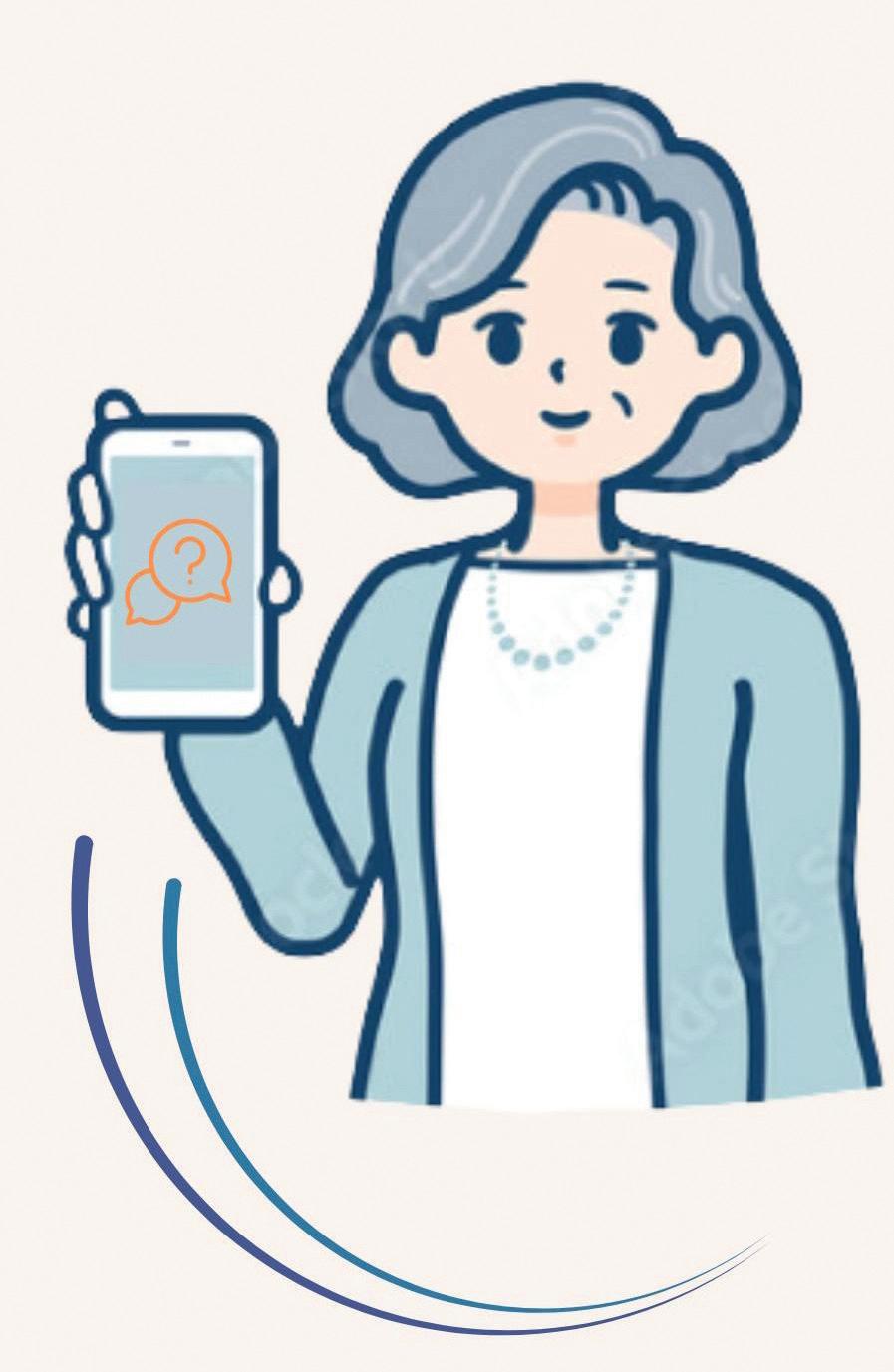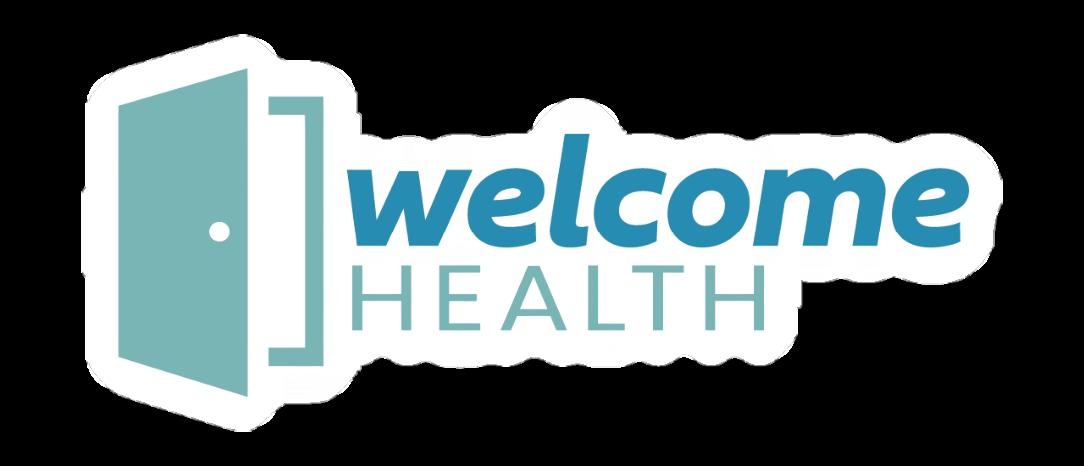

GOTHEDISTANCE
How is your everyday life going right now?
Because we live in a major medical center with 14 area hospitals, many people live here specifically because they are in poor health and need regular access to healthcare. Although it doesn’t seem like it during the hottest days of summer, our climate welcomes many who want to retire in a place where snow shovels and bitter cold are distant memories. And because many copies of this newspaper are de-

livered to hospitals and doctors offices, it’s possible that a fair number of Medical Examiner readers on any given day are not feeling their best.
All of which serves as an introduction to the two people pictured here. Perhaps you remember Gabriela Andersen-Schiess, the lady to the left. She staggered into the LA Coliseum after running most of 26 miles in the very first women’s Olympic marathon, held during the Summer Games in Los Angeles in 1984. If you watched it live, you’ve never forgotten the scene. It was painful to watch.
She reeled across multiple lanes of the track, seemingly delirious and on the verge of collapse. Medical personnel immediately ran to her side, but she waved them away, knowing any help they offered would disqualify her. They noted that she was coherent and still perspiring and therefore not in danger of heat stroke, so they closely monitored her from a few feet away as she limped and lurched the final 400 meters (which took nearly 6 minutes). The crowd gave her a standing ovation the entire way. What has happened to her since that race? That’s coming up.
In the meantime, let’s meet the gentleman to the right. His name: Fauja Singh, a national treasure in India and like Gabriela, a living embodiment of the headline above.
He was an avid runner as a younger man, but gave it up for decades until several family tragedies led him to channel his grief into running.
At the time he was 89.
There were problems: even at that age he ran 20 kilometers often, so it didn’t seem like the jump to 26 kilometers for a marathon would be too difficult. That’s when someone told him that marathons are 26 miles, not kilometers. Undeterred, he started training in earnest with a coach, and ran his first race, the London Marathon, in 2000.
In 2003 at age 92, Singh completed the Toronto Waterfront Marathon in 5 hours, 40 minutes, a record for the 90-plus age bracket. Setting records in the 90-plus group was a regular event for Mr. Singh; as might be expected, there were precious few standing records to break.
In Toronto in 2011 at age 100, Singh attempted
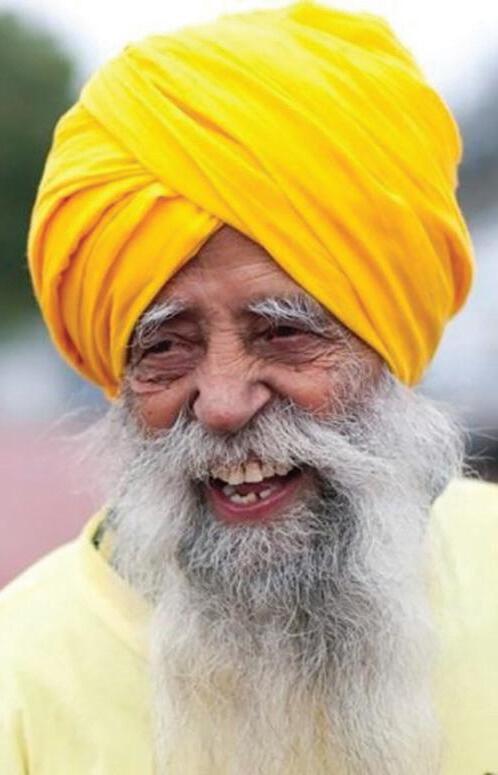







THE FIRST 40 YEARS ARE
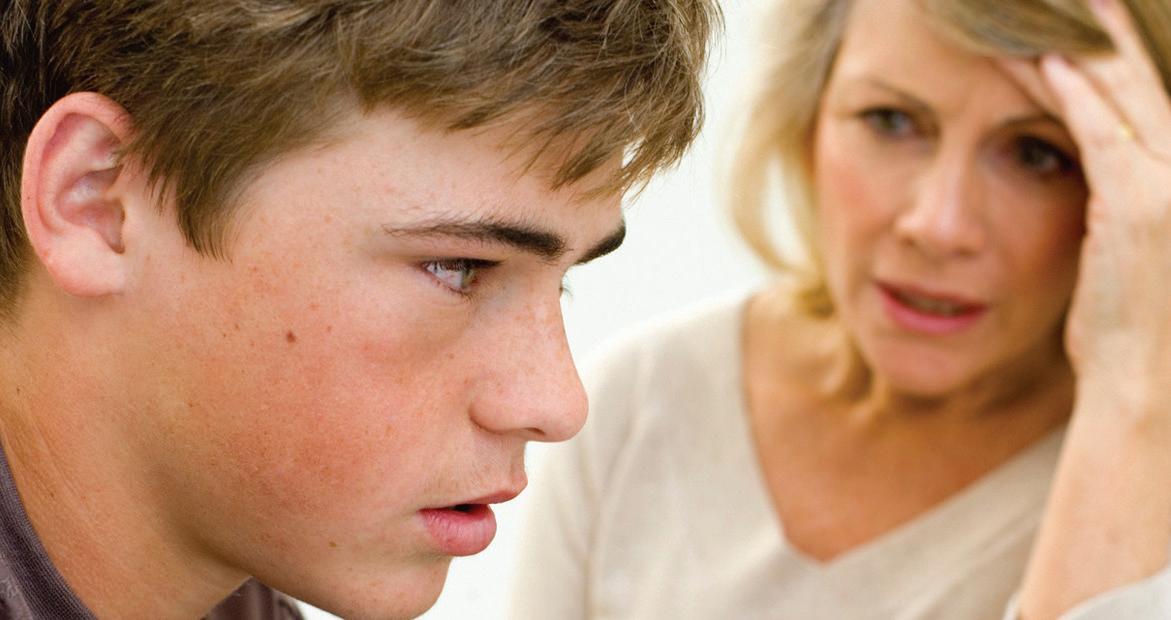
PARENTHOOD
by Dr. Warren Umansky, PhD
School has begun for the year and you are back to dealing with the responsibilities of keeping up with your children’s schoolwork and extracurricular activities and the routine challenges of keeping the family healthy and happy. You love it. Seeing your children happy and productive gives you a lot of satisfaction, even if it seems like the carousel never slows down!
Here are some tips to making the year go well:
• Have a routine for the day and try to stick to it. Let everyone know when the schedule will change for the next day.
• Have a family calendar on the refrigerator and have older children keep their own calendar on their wall with test dates, athletic events, concerts, project due dates, etc.
• Be sure everyone is getting to bed on time without electronics. If someone is having trouble getting up in the morning, an earlier bedtime will resolve the problem.
• Train your children to get ready in the morning on their own, starting with making their bed. Be sure that part of the routine is that everyone has breakfast. Make good nutrition a part of everyone’s day.
• Let the first question you ask your child after arriving home from school be, “What was the best thing that happened at school today?” It shows them that you’re interested in their education and lets them know that you’re aware that good things happen at school!
• Homework is best done right after school or after sports practices, rehearsals, etc. Fatigue becomes more of a factor the longer it is delayed and incentives for having the work completed disappear. It’s good to be able to allow some outdoor time or screen time as motivation for completing homework and studying.
• Have everyone sit down together for dinner as often as possible — without electronics.
• Be a good observer of your children, and don’t hesitate to say, “You look sad (or frustrated or tired or happy).” This may open the door for a good conversation about what is going on in the unseen parts of your child’s life.
• Know who your children spend time with.
• Avoid letting your children isolate in their rooms with electronics, and monitor their electronics.
• Life is busy, but take time to do things together. It doesn’t have to cost anything. Try taking walks, going to the park, doing jigsaw puzzles, playing catch or kicking a soccer ball, doing a hobby together (e.g., knitting, stamp collecting, carpentry, baking or cooking), or reading a book together.
• Go through your children’s bookbag together at least weekly. The younger your children are when you start, the more accepting it will be when they get older. It shows your interest in what they are working on, ensures that you are not missing notices that require your attention, and helps with keeping the bookbag organized and free of old papers that can be filed or recycled.
• Let your children see your face at home, not the top of your head! Put phone and tablet aside when your children are home and give them your time and attention.
• Most of all, let the words “I love you” be a part of every family member’s daily vocabulary. And show your affection for your children with lots of hugs and kisses.
Dr. Umansky has a child behavioral health practice in Augusta.

THOUGHTS ABOUT THOUGHTS THOUGHTS
TRYING TO EAT “PERFECT”: ORTHOREXIA NERVOSA
Editor’s note: Written by local mental health professionals, this series explores how people may think and act when affected by common and lesser-known mental health conditions.
“First, I cut out sugar. Then processed foods. Then dairy, gluten, and anything that wasn’t organic,” Jenna shared quietly. “It started as trying to eat healthy, but soon, I was terrified of every ingredient. I skipped meals at parties, spent hours researching food online, and felt so guilty if I ate something ‘wrong.’”
What began as a desire for wellness turned into an obsession that controlled Jenna’s life. She wasn’t just dieting—she was struggling with orthorexia nervosa.
What is Orthorexia?
Not to be confused with anorexia nervosa, orthorexia nervosa is an eating disorder characterized by an unhealthy fixation on eating only “pure,” “clean,” or “healthy” foods. While not formally recognized in the DSM-5, orthorexia is increasingly acknowledged by mental health professionals as a serious condition that can affect physical, emotional, and social well-being.
Unlike other eating disorders focused on weight or calories, orthorexia centers on food quality and purity. Over time, this obsession can lead to malnutrition, anxiety, and isolation.
Signs and Symptoms
• Obsessive focus on food quality, purity, or sourcing
• Elimination of entire food groups
• Anxiety or guilt about eating “unhealthy” foods
• Avoidance of social events involving food
Orthorexia often starts with good intentions—trying to improve health—but becomes harmful when the behavior becomes rigid and all-consuming.
Treatment and Management
Treatment focuses on restoring balance and flexibility in eating habits while addressing underlying psychological factors:
• Psychotherapy: Cognitive Behavioral Therapy (CBT) and Exposure Therapy to reduce anxiety around “forbidden” foods
• Nutritional counseling: Working with a registered dietitian to normalize eating patterns

MEDICAL MYTHOLOGY MEDICAL MYTHOLOGY
1. “It’s just healthy eating.” Orthorexia is about obsession and rigidity, not balance.
2. “People with orthorexia are focused on fitness and health.”
This is a mental health issue, not a positive lifestyle choice.
3. “You can tell someone has orthorexia just by looking at them.”
Not true. Many appear physically healthy while struggling internally.
4. “Cutting out foods is a good idea. More of us need to do it.”
• Medical monitoring: Addressing deficiencies and physical complications
• Support groups: Reducing isolation and challenging harmful beliefs
Prognosis
With early intervention and comprehensive care, most individuals can rebuild a healthy relationship with food. But left untreated, orthorexia can lead to malnutrition, medical complications, and significant impairment in quality of life.
Need Support?
Excessive restrictions can lead to serious health risks. +
• Rigid food rules that interfere with daily life
IPS provides comprehensive behavioral health services including assessment, medication management, and therapy for individuals and families navigating complex mental health and neurological conditions. To schedule an appointment, call 706-204-1366 or visit integratedpsych.care +
• Significant weight loss or nutritional deficiencies
• Feeling superior for following strict eating habits
What Causes Orthorexia?
No one knows what exactly causes orthorexia, but contributing factors include:
• Personality traits such as perfectionism or anxiety
• Cultural emphasis on “clean eating” and wellness trends
• Social media influence and misinformation about food
• Past dieting or body image issues
24/7, free, confidential mental health hot-line that connects individuals in need of support with counselors across the United States and its territories. People do not have to be suicidal to call. Reasons to call include: substance use disorder, economic worries, relationships, culture and identity, illness, intimate partner violence, depression, mental and physical illness, and loneliness. +

to set eight age-group world records in a single day, and succeeded all eight times. It wasn’t terribly difficult: meet timing officials said most of the categories (100, 200, 400, 800, 1500 and 3000 meters, plus the mile) had no previous record holder since no one age 100 or above had ever attempted those distances.
Three days after that track meet, he became the first 100-year-old to complete a marathon, crossing the finish line in 8 hours, 11 minutes (and 6 seconds).
While Singh’s race participation and times are well-documented, the same thing can’t be said for his age. Although family records say he was born on April 1, 1911 in the village of Beas Pind in India’s Punjab Province, official birth certificates were not usually issued back then, making third-party verification of his exact age difficult. For that reason, his personal age-related bests and those in official record books are not the same.
Today
It would be interesting to see how many people remember who won the 1984 Olympic women’s marathon, and compare that figure to how many people remember
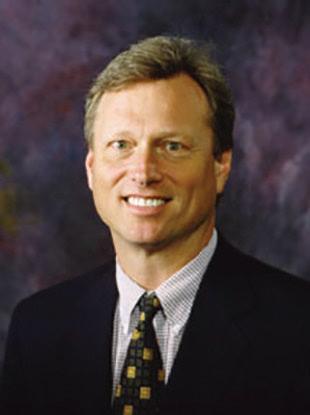
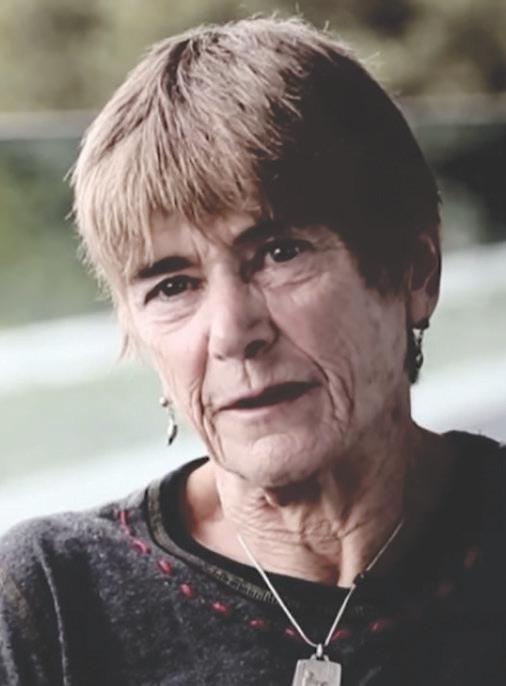
Gabriela Andersen-Schiess. It would not be at all surprising if the results were very lopsided in Gabriela’s favor. Her inner strength and determination to finish the race are much more inspiring than simply being the first person to cross the finish line.
On that hot July day in 1984, she was treated for dehydration after the race and released two hours later. The next day she told an interviewer from The New York Times that the experience was more embarrassing than anything, and that in two weeks she would be competing in a 38-mile run/ride equestrian event (which she did).
She really had nothing to be embarrassed about: her time of 2:48:42 that famous
day would have won the gold medal in the first four Olympic marathons.
She was 39 then. She is 80 today (photo, left) and lives in Sun Valley, Idaho, where she works as a ski instructor.
As for Fauja Singh, he was a torch bearer carrying the Olympic flame at the 2012 Summer Olympics. He retired from formal running competitions the following year at age 102, although he continued to attend many events as a spectator and special guest.
In retirement, Singh moved from England back to Beas Pind, the Punjab village of his birth. He was a fixture around the town, regularly seen walking along the road, and it was there on July 15, just two weeks ago, that he was struck by a car and killed as he walked to a cafe run by his family. The driver fled the scene but was later arrested. Singh was 114, and was cremated with full state honors.
Andersen-Schiess and Singh embody a motto attributed to Confuscius: “It does not matter how slowly you go as long as you do not stop.”
It may not always be easy, but as Winston Churchill once said, “If you’re going through hell, keep going.” Go the distance.


WHAT DOES “TECH TIRED” MEAN?
“Tech tired” is a term invented in Augusta, Georgia, and which first appeared in the August 1, 2025 edition of the Medical Examiner, a local newspaper there.
The term describes the extensively studied effect on sleep quality — and the resulting fatigue — caused by screen time which occurs in bed or close to bedtime.
For example, one study of more than 45,000 young adults found that screen use in bed increased the risk of insomnia by nearly 60%, and reduced sleep by an average of 24 minutes per night. This was regardless of the type of screen activity, whether a computer, phone, or TV. Another study confirmed that across-the-board effect, finding that sleep quality and quantity was affected equally whether the subjects were studying, watching movies, using social media, or something else. The screen itself seems to matter more than what’s displayed on the screen.
Why? Several reasons have been identified. Scientists have discovered that blue light emitted by screens inhibits melatonin, a hormone that helps regulate sleep cycles. Also, like the person who desperately wants to go to bed but stays up to see how a movie or TV show ends, screen time displaces sleep time and keeps people up longer. Rather than mentally relaxing and winding down before sleep, screen content can have a stimulating effect that prevents falling asleep. Notifications and alerts can ping during the night, interrupting sleep.
For these reasons and others, health experts recommend the creation of screen-free zones, which should at least include bed itself, if not bedrooms. Another good idea is creating a screen curfew: whenever bedtime is, power down the screens at least 30 minutes beforehand, if not a full hour ahead of time. Most phones have blue light filters or night modes that can be activated with a simple click. Phones can be put in airplane mode overnight to prevent sleep interruptions.
The science is crystal clear that using screens before bedtime can significantly interfere with both the quantity and quality of sleep, resulting in tech tired people. +



www.AugustaRx.com
The Medical Examiner’s mission: to provide information on topics of health and wellness of interest to general readers, to offer information to assist readers in wisely choosing their healthcare providers, and to serve as a central source of salubrious news within every part of the Augusta medical community. AIKEN-AUGUSTA’S MOST
Direct editorial and advertising inquiries to: Daniel R. Pearson, Publisher & Editor E-mail: Dan@AugustaRx.com
AUGUSTA MEDiCAL EXAMINER P.O. Box 397, Augusta, GA 30903-0397 (706) 860-5455
www.AugustaRx.com • E-mail: Dan@AugustaRX.com

www.Facebook.com/AugustaRX


Who is this?

Looking back at the accomplishments of the pioneers of medicine (as well as other branches of science) is often a humbling experience.
It can fill the mind of the explorer with amazement as he contemplates those who made historic discoveries without the benefit of microscopes, computers, or even basic facts taken for granted today upon which to build the framework of progress. And sometimes we make the inevitable comparisions between young people then and young people now.
The man pictured above is the embodiment of the intellectual prowess of some in past generations. His name was Giovanna Battista Morgagni. Born in 1682, by age 16 he was enrolled in university studies of philosophy and medicine, and graduated with high honors in both and dual degrees in 1701. That means he was still in his teens when he was awarded his medical degree.
One of his first jobs after university was as a prosector to noted anatomist Antonio Valsalva, previously profiled in this space in July 2020 (See https://issuu.com/medicalexaminer/ docs/july_17_2020). The job of a prosector was to prepare a body or specimen for demonstration by the course director or lecturer. While the prosector was lower in rank than the professor for whom he prepared the specimen, prosecting was intricate work that required detailed knowledge of anatomy, as well as the tools used to prepare specimens. It was almost like being a highly skilled and specialized surgeon, except the patients are cadavers.
In this case, Morgagni and Valsalva were more like colleagues than employee and employer. In fact, Valsalva’s celebrated textbook about the anatomy and diseases of the ear was prepared with much assistance from Morgagni.
After Valsalva moved to another university, Morgagni became the school’s principal medical educator and instituted significant reforms in anatomical observation and reasoning.
For example, he discouraged abstract speculations in favor of exact, fact-based conclusions, and spent more than half a century as Professor of Anatomy at Italy’s University of Padua, instructing medical students from all over Europe.
His level of activity throughout his career is underscored by his many papers and publications, none more noteworthy than the 1761 publication of his greatest work, The Seats and Causes of Diseases Investigated by Anatomy (published in Latin, translated into French, English, and German). He was 80 that year, and the treatise established pathological anatomy as a new and legitimate branch of medical science. Simply put, before Morgagni, it had not occurred to anyone to study the anatomy of diseased organs post mortem — only those that were “showroom fresh.”
As noted medical pioneer William Harvey put it, there is more to be learned from the dissection of one person who died of tuberculosis or another chronic malady than from the bodies of ten persons who had been hanged.
Giovanni Morgagni is to this day regarded as the father of modern anatomical pathology. +
Middle Age
BY J.B. COLLUM
This week has been another eye-opener in my continuing adventure into middle age. I was outside in this heat on Wednesday morning repairing a broken water line. As I finished mending it, I stood up and immediately felt dizzy. I thought that I had just gotten up too fast, but then I noticed that my back hurt, as well as my chest and my left arm. I was also short of breath and I was seeing spots.
As quickly as I could, I found a chair to sit in, in the shade on a porch. That didn’t prove to be good enough as I still felt awful and I recognized the signs that I was likely about to be unconscious, so I got down on the floor on purpose, in a much more controlled way than if I had simply let gravity take its course. After a few minutes on the porch floor, I tried to get my feet up into a chair, but I couldn’t manage it. Fortunately, just before I got down on the floor, I had texted my wife (Lorie) and my daughter (Kate) to come help. That was the smartest thing I did that day, maybe even that week.
I really hate to admit that I need help in a situation like that. For one thing, I often feel silly, like I am taking it too seriously and calling attention to myself. I tell myself that I am fine and shouldn’t bother anyone. But at my age and in my health condition, that could be deadly. For another thing, when I call for help, I know that the next time I am pushing myself or I want to do something strenuous, Lorie or Kate will give me all kinds of grief about how and why I shouldn’t do it, and will point back to a situation like this as proof. Justifiably, of course, but still irritating to a stubborn man like me.
Once Lorie and Kate got there, followed shortly thereafter by my brother Jeremy (they had called him), they took my blood pressure reading and it was 60 over 35! It was amazing that I was conscious. I wouldn’t have been if I had still been sitting. I did come and go during this time though. They managed to get some electrolytes in me with some sports drinks, and after about an hour, I was ambulatory once again instead of where I had begun to think I would be: in the back of an ambulance. By this time, the pipe repair job had cured and so Lorie and Jeremy turned the water supply back on and tested it. It

was all fixed, and Jeremy filled the hole for me.
Now that I have recovered, Lorie has put me on a regular regimen of electrolytes, even when I am sitting inside. We read somewhere that older folks may need more of these than when they were younger due to various things that happen as we age. I’ll leave the details to the experts on this one, but some of the factors we read about are that older people don’t tend to feel as thirsty when they need fluids. The opposite end of the spectrum is that sometimes we drink too much water and thin out or wash out the electrolytes we need for good organ function, so just drinking more water isn’t necessarily the answer in every situation.
a week! +
Then on Friday, I got word that one of my oldest and dearest friends (he also happens to be my cousin) was in the hospital in intensive care, due to the very thing we are discussing. His sodium level was dangerously low. So much so that, at first, they didn’t know if they could save him. Fortunately they were able to, but he isn’t out of the woods yet. Some damage was done, and they still don’t know the underlying cause of all of his symptoms, or even why his sodium level was so low. I am going to see him today, but his wife has warned me that his current situation and appearance will be shocking and that I should prepare myself. This cousin is five months younger than me, and his wife told me he has been struggling more and more in this heat since his job requires him to be out in it for hours at a time. It sounds all too familiar.
As I said at the outset of this article, it has been an eye-opening week. As you age, please pay attention to the heat and how you stay hydrated, and don’t forget your electrolytes. Also, don’t be afraid to ask for help. There is nothing to be ashamed about calling for help when you need it, or even only think you might need it. Life is too precious to lose over silly considerations like pride.
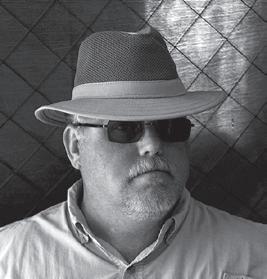
J.B. Collum is a local novelist, humorist and columnist who wants to be Mark Twain when he grows up. He may be reached at johnbcollum@gmail.com

Special Forces Parenting
Summer break for children is a great time to remember how grateful we are for good schools. Our grandchildren attend Horse Creek Academy in Aiken. It is a charter school and their Special Education department is amazing, though to be fair, the entire school is run magnificently. For our special needs grandchild, Freyja, who is seven years old, her class with usually about four or five other students, has three fulltime teachers and a therapist who visits multiple classrooms on a regular basis. I have heard that in some public schools, the ratio is much higher with 16 or more special needs students to four or five adults in the classroom. In addition to favorable ratios of students to teachers, the teachers who are there are, in my experience, happy to be there.
So, as we near the end of our summer of discontent, so-to-speak, we look forward with bated breath to the children being back in school for most of every weekday. Don’t get me wrong. We love them, we just want a break. I don’t feel too guilty about saying that as I am a grandparent playing the role of a parent. As Danny Glover, in his role as Roger Murtaugh in Lethal Weapon said, “We’re getting too old for this…” stuff. I paraphrased to keep this rated G, but you get the point. On top of that, he was only 40 when he said that, and the character Roger Murtaugh was only about 50, so it goes doubly for us older folks.
Freyja has made progress since going to this school too. We learned that she actually could sit and do an activity for a while. That
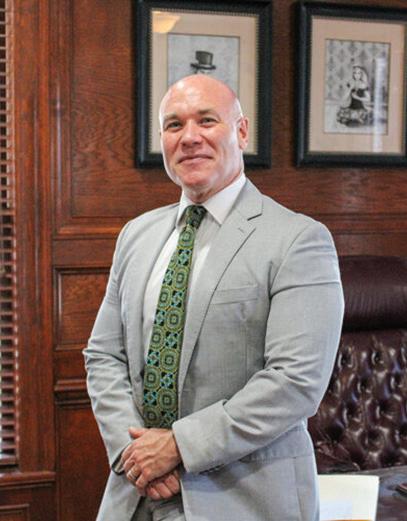
she was capable of sitting in a chair and eating her lunch. They are still working on potty training, sign language, and a few other things, but we are hopeful for her future improvement and grateful for the progress she has made. I think the best thing we can do in this regard is to supplement and reinforce the lessons here at home to keep her going in the right direction. We don’t know how far she can advance, but we are giving it our best shot to giver her the best chance she has. Her school has proven to be an invaluable resource and ally in this regard.
I recognize that not all children are fortunate enough to be in a charter school or a private school, but no matter what education situation they are in, we as parents can work alongside their educators as a team. Get involved at the school and be part of the solution, and in the unfortunate situation where your efforts prove to be in vain, or the school or teachers just aren’t working out, take advantage of some of the new things going on in education in our area like putting them on the waiting list for a charter school, or in some of our area, if their school scores below a certain threshold, you can move them to a better performing school. In one local county, 42 of the schools did so poorly that students who attend there can get vouchers to attend better-performing schools, although there are some eligibility requirements for the parents to meet. If this includes you, take advantage of it.
Our kids are only young once. Let’s get them the best education we can. Sometimes it may involve making monetary sacrifices like driving an old car a few more years instead of getting a new one every few years, or taking less extravagant vacations.
You may even have to buy generic peanut butter and that, to me, is the worst. I should know, we did itfor years when our kids were young until my wife, Lorie, told me she saved, on average, about five cents buying the cheaper peanut butter. That might have been the worst argument of our marriage, but we got over it, and I started getting my name brand peanut butter after that, so it all worked out.
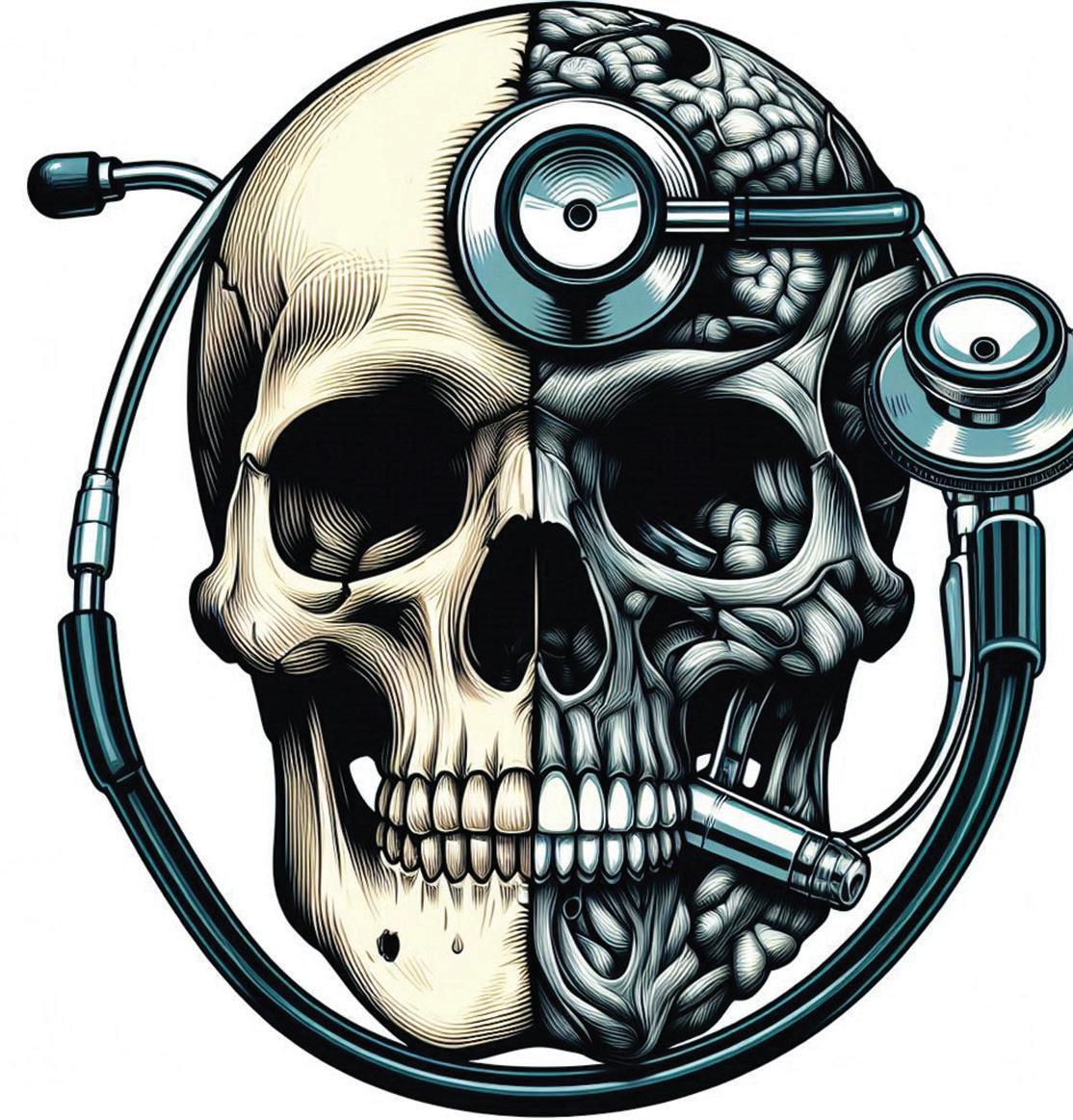

Who is this?
Not everyone in healthcare can be Florence Nightingale, right? Despite the long-running series on page 4, there are clunkers in medicine, and we will examine some of them in this series. Unfortunately, there’s enough material to keep this side of the page going for a while.
Serial killers are a pretty rare breed, relatively speaking, and that’s a good thing. Women are an even more unusual brand of serial killer; most (nearly 85%) are men. But within that small slice of killers who are female is a disturbing anomaly: about 40% of them worked in healthcare settings of one kind or another. Criminologists say it makes perfect, if perverted sense: a person with that bent has plenty of access to potential victims (who also happen to be vulnerable) and the lethal substances that can be their weapons of choice (and which are sometimes hard to detect). Their position also combines a degree of authority over patients as well as the trust we have in caregivers, making suspicions less likely. These were some of the very factors in play in the strange case of this woman, Baba Anujka, who was born in Romania in either 1836 or 1838 (yes, that is a photograph of her; she died in 1938). In her 20s she became interested in medicine and chemistry, and used her self-taught skills to earn a modest living as a healer and herbalist in her small town.
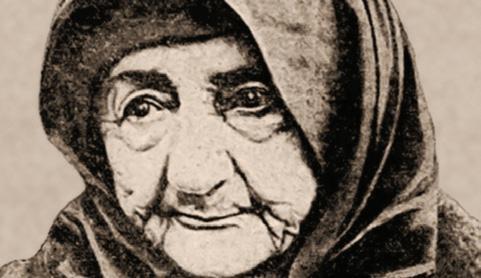
However, a simple and ostensibly helpful detour landed her on page 5 of the Medical Examiner 87 years after her death. It all started innocently enough when she gave a young man a potion designed to make him just sick enough to escape military service. It became one of her best sellers.
But then married women started asking for stronger versions of the concoction to give to their husbands. After hearing a woman’s wifely complaints about drunkenness or beatings, Anujka would ask “How heavy is this problem?” She would then customize the potions for each woman depending on her husband’s size, selling the mixtures as “magic water” or “love potions.” The men would usually die within a week or two from the potions, laced with arsenic and various plant toxins.
Her victims were often young and healthy, so the deaths did not go unnoticed. Eventually Anujka was arrested and tried for murder, but even her clients claimed she was innocent.
They believed the potions truly were magical, and that Anujka possessed supernatural powers to kill people who were evil.
Her first trial, in 1914, ended in her acquittal, but she was arrested again in 1928 at age 90 along with one of her co-workers and several of her clients. Bodies were exhumed, and traces of arsenic were found.
The trial followed a familiar script: widows claimed they didn’t know the magic potions were lethal, and Anujka denied all charges, claiming the whole case was fabricated by the real murderers in an attempt to blame her for their crimes.
The verdicts were handed down on July 6, 1929. Two women, one who murdered her husband, the other her father in law, received life sentences. Baba Anujka was sentenced to 15 years as an accomplice, her co-worker 8 years.
She was released in 1936 due to old age after serving 8 years. She maintained her innocence until her death despite suspicions that she killed as many as 150 people.
+

THE BEST LAID PLANS
by Ken Wilson Steppingstones to Recovery
I n 1785 the poet Robert Burns wrote a line that, unlike groceries in your kitchen, never goes out of date: “The best laid plans of mice and men oft go awry.” Seems he was plowing in a field and accidentally unearthed a mouse bed –oops! – he never planned on that and neither did the mice. The phrase was also inspiration for John Steinbeck’s novel written during the great depression, Of Mice and Men
Probably the most vivid recent illustration of that truth happened at the Coldplay concert last week when a frolicking couple, married (but not to each other), were caught dead center on video and – yep, you remember – dropped straight down outa sight when they realized that all eyes were on them in a
public spectacle! Oops! The final chapter of that story is now being written!
In addiction counseling terminology, we call it “bottoming out” when what is done in private suddenly becomes public – a DUI perhaps, an arrest, a job firing, divorce announcement, or maybe an ER visit. An opportunity to take notice and get well or just think “damn the torpedoes” and blast full strength ahead in addiction or alcoholism.
Of course, one’s “bottom” can come in various degrees of pain. Some alcoholics recognize their downward spiral of dependence and take action on their own before losing it all. In treatment we refer to these lucky ones as having a “high bottom.”
Then there are others. Those hitting a “low bottom” might lose their job, family, legal status, and
health in one event after staving off consequences for years – one lucky situation after another. Getting out of a DUI charge, almost getting fired for coming to work with the strong aroma of alcohol on the breath, or maybe yet another promise to the wife to stop drinking altogether. Social media and newspaper notices are quick to advertise the plight of the unfortunate.
At least the proverbial thousand times I’ve heard loved ones say, “I’m just waiting for Johnny to hit bottom and hopefully he’ll get well then.” I dislike hearing that, knowing that families don’t have to sit idly by and wish, hope, and wait for some event to come along in the sweet by and by to force a decision to get well. Doing an Intervention is always an option. This is a technique to “raise the bottom”
for a practicing addict or alcoholic so they won’t die from their addictive disease while waiting. The longer one puts off getting clean and sober, the more difficult the process is –not unlike any other medical condition out there.
I ask for you, the reader out there, to have compassion on the suffering alcoholic. They did not ask for this condition. Some drink less than their counterparts who never have negative consequences from drinking excessively at times. This illness certainly runs in families – statistics vary from 5080% incidence of children becoming alcoholic with an alcoholic parent or even grandparents. Some were born “an accident waiting to happen” as the chemical called alcohol sets off a reaction in the human brain that is destined for trouble. Be compassionate with
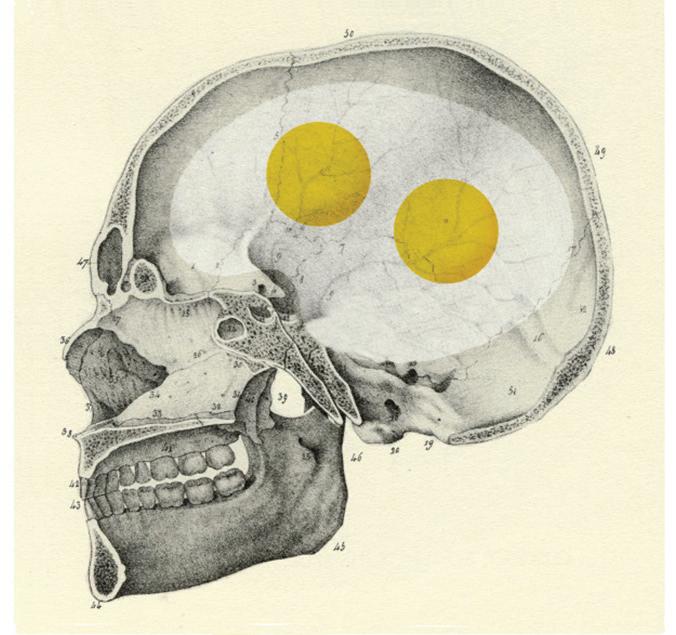
them as you would wish for them to be so with you were the tables turned.
Maybe even for you, the concert has begun and the music is playing. Cameras are clicking and videos are recording. When the spotlight stops on you there are two choices: quickly duck out of sight and hope nobody gets the memo, or just carry on by smiling and waving back.
Today anyway, I’m smiling and waving back!

MEDICAL EXAMINER


TRYTHISDISH
by Kim Beavers, MS, RDN, CDCES
Registered Dietitian Nutritionist, Chef Coach, Author
Follow Kim
on
Facebook: facebook.com/eatingwellwithkimb
GRILLED TOMATOES & ZUCCHINI
When you grill vegetables please grill extra, because having a bunch of leftover grilled vegetables is great prep for future meals. Healthy cooking begets healthy eating!
Ingredients
• 2 zucchinis cut into ½inch pieces
• 1 pint grape tomatoes
• 3 tablespoons Greek dressing of choice
• 4 tablespoons feta cheese (optional)
• Parsley for serving (optional)
Directions
Preheat the grill for low to medium heat.
Combine vegetables in a large bowl; add dressing, and toss to coat.
Put vegetables in a vegetable grilling pan (I place the grill pan over a plate so the marinade will drip onto the plate prior to placing the pan on the grill, this decreases flare-ups).
Cook the vegetables over medium low heat for ten minutes or until done. Toss the vegetables and stir a couple of times throughout the cooking process. Serve with feta cheese and parsley if desired.

Yield: 6 servings:
Nutrition Breakdown: 60 calories, 3.5g fat (1.5g saturated), Cholesterol 5mg, Carbohydrate 5g, Fiber 1g, Sodium 110mg, Protein 2g, Potassium 295mg.
Diabetes Exchanges: 1 Vegetable, 1 Fat
Additional serving ideas that use grilled vegetables!
• Boil noodles of choice, and while the noodles cook lightly sauté the leftover veggies and white beans in EVOO and garlic. Serve over pasta
and top with Parmesan.
• Serve leftover grilled veggies over morning toast. Alternatively try these grilled veggies stuffed into a tortilla and cook in a non-skillet until warm. Better yet make it a morning quesadilla by adding a scrambled egg.
• Add grilled vegetables over a bed of lettuce with cucumbers, grilled sliced chicken with Greek dressing.
• Add the grilled veggies to a stir-fry with brown rice, soy sauce and edamame.




DO SOMETHING. TODAY.
I’m sitting here wondering will a match box will hold my clothes.
I ain’t got no matches, got a long way to go.
I’m ole poor boy, a long way from home.
Guess I’ll never be happy, everything I do is wrong.
— Carl Perkins
Carl Perkins spent a lifetime making a fortune singing his song. He toured the world with his guitar and his wig. Making us all happy. Our hearts thumped to the rhythm of rockabilly.
Without a psychology degree, Carl was onto something. He might’ve had an insight into this simmering insecurity that dwells in most of our souls. While growing up, we tend to look at those around us and think they may be taller, prettier, smarter, richer, or happier. It ain’t
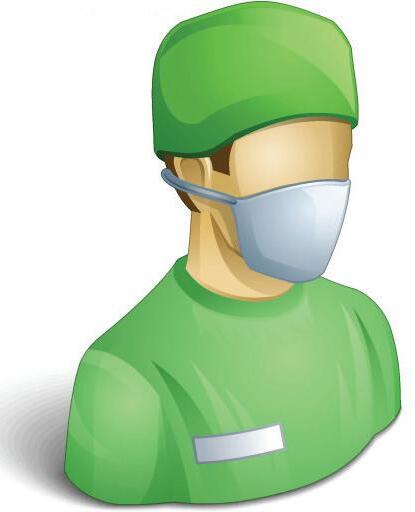
BASED ON A TRUE STORY
(most of the time)
A series by Bad Billy Laveau
necessarily so. In reality, they have the same insecurities that each of us suffer from. It is a human thing.
makes your toes tap and your finger snap. He could have sat at home and worried about his receding hairline. But he didn’t do that.
He packed up his wig and guitar picks and toured the world.
Carl heard Big Joe Turner’s line: Like a one-eyed cat peeping in a seafood store, I see you ain’t a kid no more.
you (and maybe your Mama), care anything about how you feel. The world is interested in what you do How did you make your life better? How did you make those around you happier? How did you make the world a better place?
Brother Dave Gardner said: “Tell me something you believe in. I got enough doubts of my own.” He made me laugh with that line. Later on, I wondered if he was dead serious, and I was too dumb to understand him at the time.
thought was hinderance. We call it penicillin today.
What did Carl Perkins and Fleming have in common? They ignored limitations and made lemonade out of lemons. (Yes, I know that line is trite, but fits here.) You tend to find what you look for.
John Anderson had the right idea when he sang:
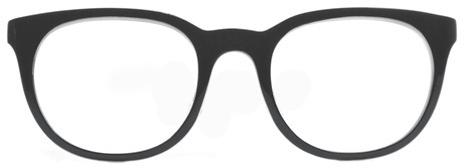

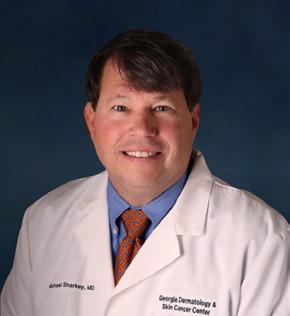
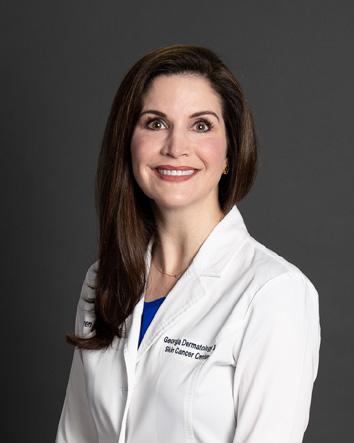
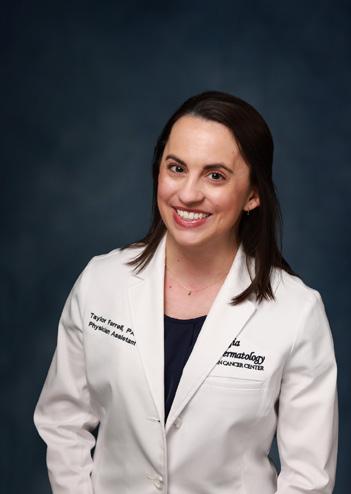
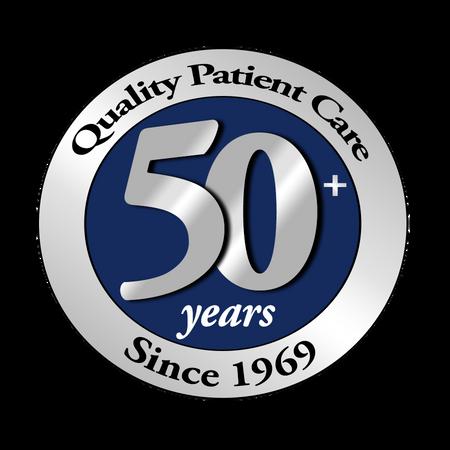
Nobody cares what you are capable of. The world cares what do. Sir Alexander Fleming could have thrown out the mold growing on petri dishes in his lab. Everybody else called the mold a contaminate and a hinderance. Fleming took the penicillin mold and changed the world.
Everyone was capable of making Fleming’s observation. But Fleming did something constructive with what others
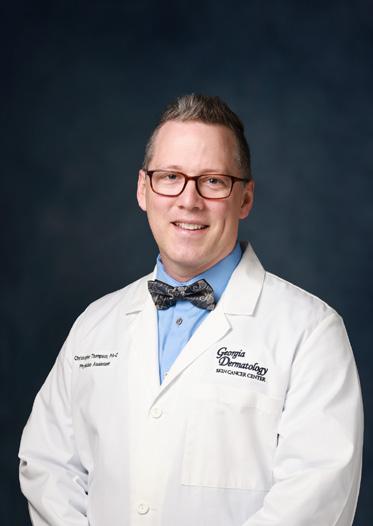
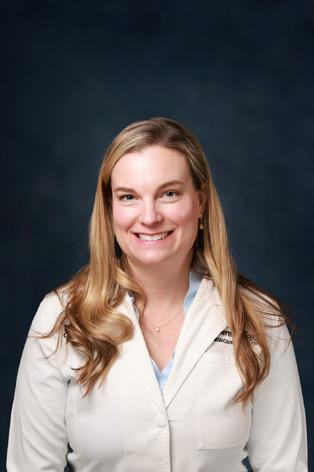

I‘m just an old chunk of coal, but I will be a diamond someday.
Hey, I’m just an old chunk of coal but I’m gonna be a diamond someday
I’m gonna grow and glow till I’m so blue pure perfect I’m gonna put a smile on everybody’s face
I’m gonna kneel and pray every day
Lest I should become vain along the way
I’m just an old chunk of coal now Lord, but I’m gonna be a diamond someday.
Life is not about the limiting altitude society holds over your head. Life is about the attitude within your head. Life is not about what you can do. Life is about what you do. Don’t just stand there. Do something. But make sure it is something worthwhile. There is more to life that just eating and excreting. You have an obligation to do something worth repeating by generations to come. If you have not found it yet, keep looking like a one-eyed cat peeping in a seafood store. It is there, somewhere, right before you.
Are you an old chunk of coal? Or a diamond? It is up to you.
The world is waiting. You have the choice. You can live crappy. Or you can live happy. Chose a happy place to survive and thrive.

Varden Drive Aiken, SC 29803 (803) 641-6104

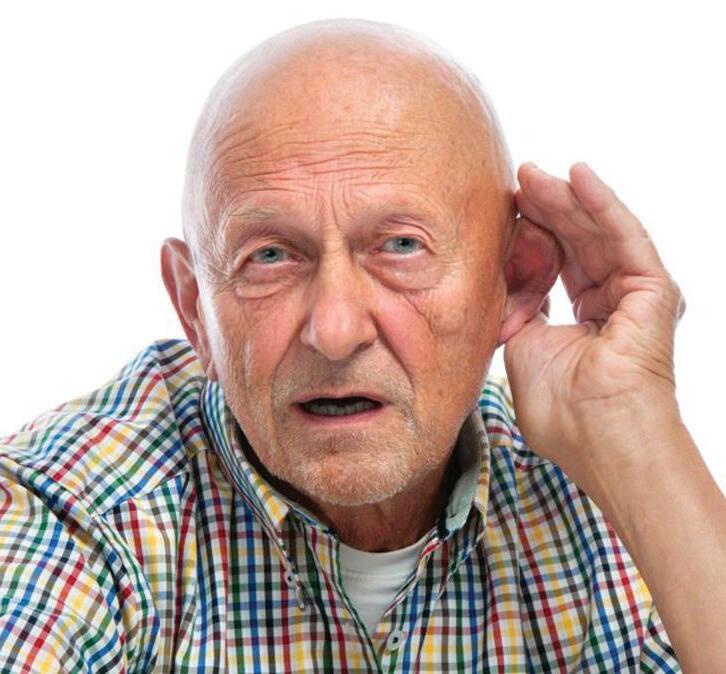

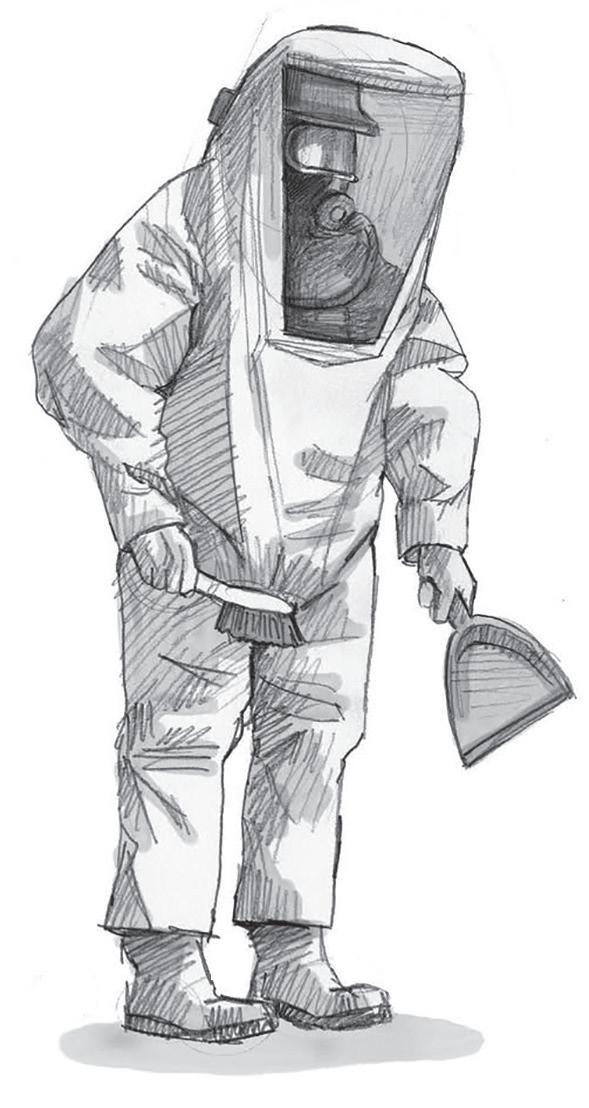













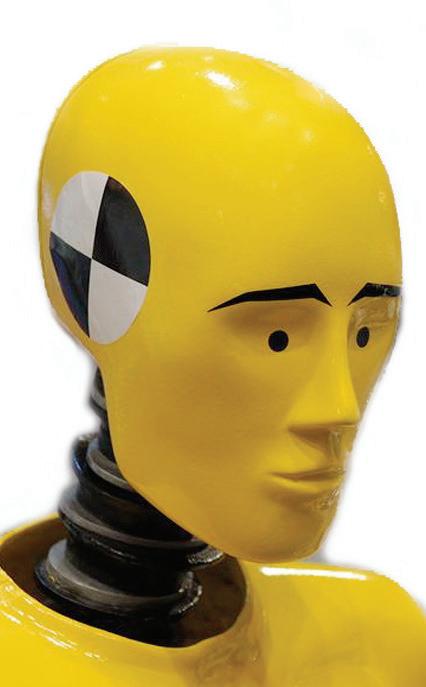
CRASH COURSE
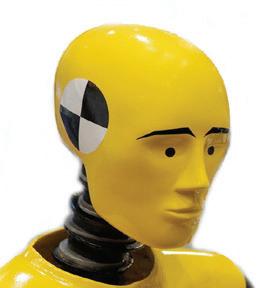
More Americans have died on US roads since 2009 than in World Wars I & II combined
Please take a moment to read the sentence just above. There is no number shown, but more deaths than two world wars — and just since 2000 to boot — is an appalling death toll.
Here is a fact that is even more appalling: according to the American Automobile Association (AAA), more than half of all fatal accidents (as studied between 2003 and 2007) involved at least one driver who performed a potentially aggressive action. That represents a tremendous toll of lives lost.
What is aggressive driving?
As defined by AAA and other highway safety organizations, examples of aggressive driving behaviors include things that many of us may be guilty of:
• Speeding
• Tailgating
• Cutting in front of another driver and then “brake-checking” them
• Running red lights
• Weaving in and out of traffic
• Changing lanes without signaling
• Blocking cars attempting to pass or change lanes
• Using headlights or brakes to “punish” other drivers
Who does it?
Hundreds of millions of American drivers are guilty of one or more infractions that are defined as aggressive driving. Here are a few triple-A stats:
• Purposefully tailgating: 51% (104 million drivers)
• Yelling at another driver: 47% (95 million drivers)
• Honking to show annoyance or anger: 45% (91 million drivers)
• Making angry gestures: 33% (67 million drivers)
• Trying to block another vehicle from changin g lanes: 24% (49 million drivers)

• Cutting off another vehicle on purpose: 12% (24 million drivers)
• Getting out of the vehicle to confront another driver: 4% (8 million drivers)
• Bumping or ramming another vehicle on purpose: 3% (6 million drivers)
Did you read one or more of those numbers and think, that figure is definitely too low? There is no doubt that these numbers, even if they’re accurate or on the low side, represent a huge problem and a great risk to safety.
It is no great stretch to imagine that aggressive driving leads to traffic accidents. Anyone who has experienced even a minor traffic accident knows how inconvenient and expensive they can be. But they can be life-changing too. Even life- ending Aggressive driving also can easily lead to road rage, situations where a trivial, forgettable and forgivable infraction (like having someone honk at you) escalates to deadly reactions like trying to ram another car or its driver, forcing the other car off the road, or one or both drivers resorting to gunfire to solve their petty little skirmish.
Keep in mind that even the most aggressive driving infractions are usually completely inconsequential. Granted, that isn’t true if they cause a collision. But someone who fails to use their blinker or gives you an angry yell or an obscene gesture in the grand scheme of things means absolutely nothing. Forget it.
AAA makes these three suggestions:
• Don’t Offend: Never cause another driver to be forced to change their speed or direction in response to something you have done.
• Be Tolerant and Forgiving: The other driver may just be having a really bad day. Assume that it’s not personal.
• Do Not Respond: Avoid eye contact, don’t make gestures, maintain space around your vehicle, and contact 9-1-1 if needed.

EVERYONE HAS A STORY
One word: eczema
Eight decades ago, at age two, eczema (atopic dermatitis) reared its ugly head and chewed away at my skin. I itched and scratched and bled for the next 13 years. Half of my first-grade year went by before I was well enough to attend.
My maternal grandmother sewed little white long sleeve jackets for me to wear to school. My first-grade teacher was empathetic. When I bled through my jacket sleeves, she gently said, “Bonnie Sue, it’s time for you to go home.” During the next decade that old devil eczema spread over most of my body. My small-town classmates were kind and didn’t ostracize me. My eighth-grade basketball coach recruited me because I was tall. I told him I had two left feet. He said, “Bonniper Bishopper, you can do it”.
Basketball uniforms didn’t leave much to the imagination. Knee pads failed to hide open wounds behind my knees. Visting crowds taunted me. I took out some of my anger by banging a few girls to the floor.
Coach liked that. Our basketball year was more than successful. But enough is enough, I reasoned. Besides, some of those girls I put on the floor might be bigger and meaner next year. Get out while the getting is good and I was still in one piece.
Long sleeves shrouded my arms daily. A girl whom I befriended when others didn’t nominated me for cheerleader. Surprise, surprise. I was elected. Thus began four of my happiest school years. “I scream. You scream. Everybody scream for our team!
Raa. Raa. Sis. Boom Baa.”
Soon, a light bulb moment hit me. I looked up and said to God. “You want us to be a light to others for you. Eczema could finish ruining my life, but I will use it as an instrument of love to help others. Eczema will not destroy my life.”


Eczema did not retreat. Itch. Scratch. Bleed. A terrifying trio that should be ensconced in Hell.
Some mornings, Mom peeled my dead skin away to make me more presentable. Some nights, Mom or Dad sat by my bedside holding my arms so that I could not scratch myself. The itching never stopped.
My family doctor used a litany of the latest treatments. Once he smeared black coal tar on my arms, then wrapped them from my armpit to my wrist in white gauze. I looked like a mummy on a bad day. Coal tar was ugly, but helped some. When Cortisone was created by one of my Dr’s colleagues in Houston, we tried it. it worked. Hallelujah! In a year I looked and felt like a different girl.
I blossomed and worked hard to be a kind and helpful person to others who struggled to survive. I owed the world that much.
Eczema flared when I ate certain foods. Allergy testing determined that I was allergic to over 200 foods. I did not know there were that many foods.
With dietary changes and occasional steroids, I survived. I thrived. An eczema cure was not in the works, but my life is manageable. My confidence and self-worth blossomed. Short sleeve dresses without shame were a special thrill. I got my nails done without thinking, “I wonder if these will draw blood in my sleep?”
Now TV is filled with ads about new drugs for eczema and related disorders. Maybe I was born a few decades too soon.
nioJ eht snet fo seinapmoc ohw ydaerla

— for the Examiner by Bonnie Case Bluff Dale, Texas


DRINK UP! DRINK UP!
by Caroline Colden, M.D.
I don’t know about you, but I sweat like it’s my superpower. I can completely drench myself even if I am not working out really hard. Just sitting in my hot car is enough to force those salty beads of sweat to surface on my upper lip and forehead. With all my sweating, I am very conscientious about hydrating myself. Very few things feel as bad as a dehydration headache. Fortunately, I am a fish when it comes to drinking water. I have a pretty good thirst mechanism and sometimes I’ll even drink water just because I’m bored.
But I am finding that many people are not like me. They are what I call “camels” who can somehow go for hours, even an entire day, without the urge to drink anything. Usually they feel fine if they are not overexerting themselves or exposed to a lot of heat, so they will be relatively asymptomatic despite being dehydrated. Over time they have acclimated themselves to this state.
This can be dangerous because if someone who is already dehydrated loses more water, severe dehydration can occur and hit hard. Symptoms can include headache, nausea, drowsiness, dry mouth, increased heart rate, “seeing spots,” generalized weakness, and dizziness with standing. Some people report feeling like their heart is pounding. If dehydration is severe, alterations in mental status or fainting can occur, and if not corrected quickly, can result in hospitalization.
Water comprises a greater percent of a person’s body weight than anything else. So when a person has not taken in enough fluids, the entire body suffers. Tissues become dry, normal metabolic functions are impaired, and blood becomes thicker and more difficult to circulate throughout the body. As a result, the heart needs to pump harder and faster in order to compensate, and this can be perceived by the dehydrated individual as a pounding or racing heart. To make things more complicated, the dehydrated state can decrease the amount of blood returning to the brain to help it do its daily work. As a result, dizziness, “fogginess,” and mental impairment can result. If a dehydrated person stands up too quickly, fainting can occur.
The symptoms and severity of dehydration can be especially dangerous in children. Children cannot recognize signs and symptoms of something such as dehydration the same way an adult can, and can be confused about why they are feeling bad. They can also have trouble articulating their need for fluids to a caretaker.
Furthermore, children manifest signs and symptoms of fluid depletion and volume loss a little differently than adults, so it can be more difficult to recognize dehydration in a child. But because of their smaller size and overall smaller everything, dehydration can affect them more profoundly than it would adults. For this reason, it is especially important to monitor fluid intake and loss in children. Fluid losses don’t necessarily need to occur in the form of sweating or from exposure to heat; increased urination, illness, fever, diarrhea or vomiting can all lead to substantial losses that will need vigorous rehydration.
Regular water is never ever a bad option, but if a child is particularly at risk for dehydration, special drinks like Gatorade, Powerade, Pedialyte, or any drink that contains water as well as electrolytes will be helpful. Soda and juice are less desirable, since soda has almost no nutrient content and juice is packed with sugar. At the end of the day, however, any fluid is better than no fluid, especially with the heat that characterizes Augusta during the summer.
Seniors Helping Seniors®,
match older adults who need a hand with friendly, mature caregivers—people who understand, share their interests, and bring joy to ever yday moments. Whether it's help around the house, getting to appointments, or just sharing a laugh, our caregivers offer suppor t with daily living in
way that feels natural and uplifting.

So I urge everyone who reads this article today to be mindful of staying hydrated and to be especially mindful of keeping the little ones around us hydrated too.
Summer is one of the most enjoyable times of year, especially if you don’t spend it in the Emergency Room.
Stay cool, Augusta!
Editor’s note: with the ghastly hot temperatures this week, and the hydration-related misadventures of J.B. Collum (see p. 4), this seemed like a good time to revisit this 2016 Medical Examiner column by our old friend Dr. Caroline Colden.

Whew, this weather has been sizzling.
Absolutely scorching.

And there is no relief in sight.
I’m going to a plastic surgeon tomorrow for a break from this heat.

ACROSS
1. King backing Sharon Jones
4. Augusta visitor of old
8. White of the eye
14. Famous Ernie
15. Century plant
16. Type of justice 17. Might 18. Poet
19. Take part in, as in battle
20. Peach follower
22. Took a load off
23. Injure
24. Legal adjective
29. Shun
31. Tavern
32. Your sister’s daughter
33. Negative vote
34. Used to be
35. Center lead-in
36. Coloring material
38. An undertaking with risk
40. Grand ___
41. Rank; putrid
43. Drug drips
45. Depart
46. Its capital is
DOWN
1. Slightly used new car
2. Having wings
3. Hitchcock classic
4. Loose sleeveless outer garment
5. Clock descriptor
6. Theater in Washington, D.C.
7. ____ Talk
8. Javelin
9. Carry on
10. North ____ (local road)
11. Bush Field abbrev.
12. Manipulate; tamper with 13. Bandage type
21. “I am in charge here” Secretary of State
22. Temp.
24. Dave the Brave (1989-1996)
25. Title of a knight
26. Division of a school year
27. Glacial epoch
28. Former name of Sri Lanka
29. Jackson’s first name
WORDS
How’s that going to help?
by Dan Pearson
Haven’t you seen the ads for coolsculpting?

THE MYSTERY WORD
The Mystery Word for this issue: SHAMCOT
Simply unscramble the letters, then begin exploring our ads When you find the correctly spelled word HIDDEN in one of our ads — enter at AugustaRx.com
We’ll announce the winner in our next issue!
A M I N E R S U D O K U
DIRECTIONS: Every line, vertical and horizontal, and all nine 9-square boxes must each contain the numbers 1 though 9. Solution on page 14.
30. Journey
31. Prefix meaning all-inclusive
34. Marry
35. DOE site
37. #2 Irish musician after U2
38. A and B, as examples
39. Light type (Abbrev.)
42. Arrest response?
44. Crafts partner
47. Medical College on Telfair adjective
48. Walton’s first name
49. Odor ________ brand
51. Bathroom fixture
52. Wearied by dullness
54. Like some necessities
55. Internal prefix
56. June 6, 1944 abbrev.
57. _____ Tour
58. Nouveau intro 59. Permit
60. Spike add-on 61. M.D. ref. tome
QUOTATIONPUZZLE

DIRECTIONS: Recreate a timeless nugget of wisdom by using the letters in each vertical column to fill the boxes above them. Once any letter is used, cross it out in the lower half of the puzzle. Letters may be used only once. Black squares indicate spaces between words, and words may extend onto a second line.
Solution on page 14.
Use the letters provided at bottom to create words to solve the puzzle above. All the listed letters following #1 are the first letters of the various words; the letters following #2 are the second letters of each word, and so on. Try solving words with letter clues or numbers with minimal choices listed. A sample is shown. Solution on page 14.


TTHEBESTMEDICINE

ha... ha... ing for interesting rocks.

he company’s management team gathered in the conference room for a meeting. One of the big wheels told a joke and everyone laughed except one guy.
The corporate guy noticed and asked, “Didn’t you get my joke?”
“Oh, I got it all right,” the man said, “but I just gave HR my two week notice.”
The teacher was quite impressed that Johnny knew his numbers already, and he was only in kindergarten. Johnny proudly said his daddy taught him.
“Do you know what comes after seven?” she asked.
“Eight!” he said.
“Good! What comes next?”
“I know!” he said. “Nine!”
“And then?”
“Ten!” he said.
“Very good, Johnny!” said the teacher. “And what comes after ten?”
“The jack!” he said.
Moe: I love going to the beach and look-
Joe: We went last weekend and I found a rock shaped exactly like a guitar pick.
Moe: You can use it to make rock music.
Moe: I woke up this morning feeling like a million bucks! You?
Joe: I woke up feeling like insufficient funds.
Moe: Did you know they don’t have the real Mona Lisa in the Louvre?
Joe: What? Since when?
Moe: It’s true. They only have a painting of her.
Moe: How come the butterfly wasn’t allowed at the dance?
Joe: Because it was a moth ball?
Moe: I was reading that Google was invented by an Oriental knight.
Joe: I’m pretty sure that’s not right.
Moe: No really. It was Sir Chenjin.
Moe: Hey, I can’t find the dictionary. Do you know where it is?
Joe: Have you looked upstairs?
Moe: Are you not listening? I can’t look up anything! I can’t find the dictionary!
Moe: So you got a new dog?
Joe: Two, actually, named Calvin and Klein.
Moe: What kind of dogs are they?
Joe: Boxers.

Staring at my phone all day has certainly had no Effect on ME!
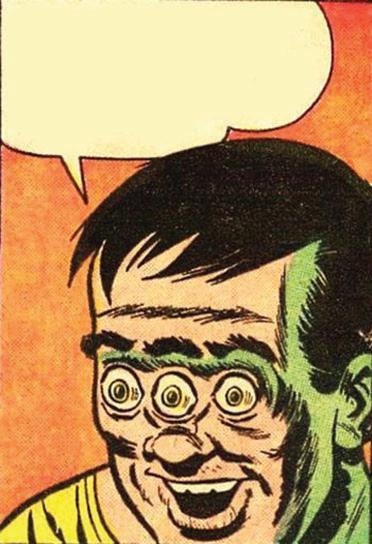
By popular demand we’re making at-cost subscriptions available for the convenience of our readers. If you live beyond the Aiken-Augusta area, or miss issues between doctor’s appointments — don’t you hate it when that happens? — we’ll command your mail carrier to bring every issue to your house!
NAME
ADDRESS
CITY STATE ZIP
Choose six months for $26 or one year for $48 . Mail this
Dear Advice Doctor,


My sister and I have always been close, but last winter we had a bit of an argument that has festered ever since. It progressed to big noisy fights, and now has disintegrated into a cold war. When I think about how often we used to talk, the silence these days is deafening. The thing is, over the months I have come to the realization that I was in the wrong from the start. I don’t know how to fix this, but I hope my sister can find it in her heart to forgive me. Any ideas?
— Seeking the war’s end
Dear Seeking,
I’m sure this is distressing to you, but I want you take an optimistic view of your situation. You are most fortunate to be alive now.
I don’t know from your question what “it” is that your sister thinks she might find in her heart. But consider for a moment what she would have faced in generations past. The only two choices back in the day were not enough and too much. On the one hand, all doctors could do was listen with a stethoscope. The only other diagnostic option was open heart surgery.
A hundred years ago it would have been considered unthinkable science fiction to examine blood vessels and even the heart from the inside. But that is done every day of the week at hospitals around the country and across the globe. Sometimes the procedure is very simple and non-invasive: a contrasting agent is injected into the bloodstream, and an x-ray will identify anything needing attention, such as an arterial blockage.
Even more amazing to someone from a century ago might be the common procedure today known as cardiac catheterization. As common as it is, it’s still somewhat astounding to think that a camera and a wire with tools a skilled surgeon can employ can be threaded into the heart itself from a vein in the leg.
By these means, problems can be identified and corrected. Stents can be deployed, for example, to alleviate arterial blockages Whatever your sister hopes to find in her heart, I wish her well.
Thanks for your question. I hope my advice has been helpful.
Do you have a question for The Advice Doctor about life, love, personal relationships, career, raising children, or any other important topic? Send it to News@AugustaRx.com. Replies will be provided only in Examiner issues.



THE MYSTERY SOLVED
The Celebrated MYSTERY WORD CONTEST
...wherein we hide (with fiendish cleverness) a simple word. All you have to do is unscramble the word (found on page 12), then find it concealed within one of our ads. Click in to the contest link at www.AugustaRx.com and enter. If we pick you in our random drawing of correct entries, you’ll score our goodie package!
SEVEN SIMPLE RULES: 1. Unscramble and find the designated word hidden within one of the ads in this issue. 2. Visit the Reader Contests page at www.AugustaRx.com. 3. Tell us what you found and where you found it. 4. If you’re right and you’re the one we pick at random, you win. (Winners within the past six months are ineligible.) 5. Prizes awarded to winners may vary from issue to issue. Limited sizes are available for shirt prize. 6. A photo ID may be required to claim some prizes. 7. Other entrants may win a lesser prize at the sole discretion of the publisher. 8. Deadline to enter is shown on page 12.




PROFESSIONAL DIRECTORY
ACUPUNCTURE
Dr. Eric Sherrell, DACM, LAC
Augusta Acupuncture Clinic 4141 Columbia Road
706-888-0707 www.AcuClinicGA.com
CHIROPRACTIC


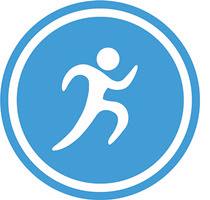
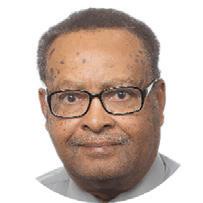
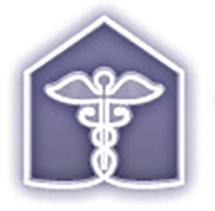

Karen L. Carter, MD 1303 D’Antignac St, Suite 2100 Augusta 30901 706-396-0600 www.augustadevelopmentalspecialists.com

‘em or lose ‘em!




Elder Care LLC Certified Home Health/Caregiver 706-231-7001 everydayeldercare.com

Care|Skilled Nursing|Companion 706-426-5967 www.zenahomecare.com
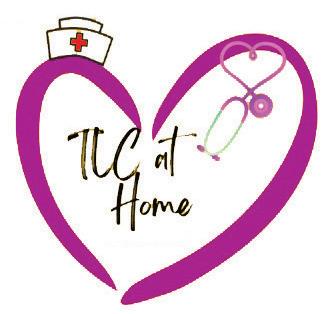
Institute of Augusta

Bashir Chaudhary,


















